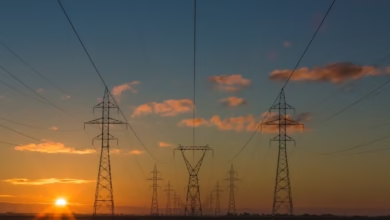Smart Grids: Revolutionizing Energy Efficiency and Renewable Integration for a Sustainable Future

In an era where climate change and the urgent need for sustainable energy solutions dominate global discussions, smart grids are emerging as a pivotal technology in the energy transition. These advanced electricity networks leverage smart technology to enhance energy efficiency, bolster energy security, and facilitate the integration of renewable energy sources. As we shift away from fossil fuels and towards greener alternatives like solar power, wind energy, and hydropower, smart grids play a crucial role in managing this complex landscape. They enable seamless energy transportation, support energy storage solutions, and pave the way for innovations that can reshape energy markets and policy. This article explores the multifaceted role of smart grids in modernizing electricity infrastructure, their impact on renewable energy integration, and future trends that promise to revolutionize how we think about energy economics and investment. Join us as we delve into the transformative potential of smart grids and their significance in driving a sustainable energy future, free from the constraints of traditional energy sources.
- 1. The Role of Smart Grids in the Energy Transition: Enhancing Energy Efficiency and Security
- 2. Integrating Renewable Energy Sources: How Smart Grids Facilitate Solar Power, Wind Energy, and Beyond
- 3. Future Trends in Energy Markets: Innovations in Smart Grids and Their Impact on Energy Policy and Investment
1. The Role of Smart Grids in the Energy Transition: Enhancing Energy Efficiency and Security
As the world transitions towards a more sustainable future, the role of smart grids becomes increasingly pivotal in enhancing energy efficiency and security. Smart grids leverage advanced technologies to optimize the generation, distribution, and consumption of energy, thereby supporting the integration of renewable energy sources such as solar power, wind energy, and hydropower into the energy markets. These modernized systems allow for real-time monitoring and management of energy flows, facilitating a more resilient and responsive electricity grid.
One of the key benefits of smart grids is their ability to enhance energy efficiency. By utilizing data analytics and automation, smart grids can predict energy demand and adjust supply accordingly. This dynamic response helps to reduce waste and improve the overall efficiency of energy systems. For instance, consumers can utilize energy storage solutions and smart appliances that operate during off-peak hours, thus lowering energy costs and minimizing reliance on fossil fuels.
In addition to efficiency, smart grids significantly contribute to energy security. By integrating distributed energy resources, such as bioenergy and thermal energy, smart grids create a more diverse energy mix that reduces vulnerability to supply disruptions. This diversification is crucial as countries strive to balance their energy imports and exports while transitioning away from fossil fuels towards greener energy solutions. Moreover, the incorporation of technologies like carbon capture and hydrogen energy can further enhance the sustainability of energy production.
The energy transition also necessitates robust energy policies that support the development and deployment of smart grid technologies. Investments in energy R&D are essential to drive innovations that improve grid reliability and performance. As electric vehicles gain popularity, smart grids can efficiently manage increased loads and ensure that charging infrastructure is integrated into the broader energy system.
In summary, smart grids play a vital role in the energy transition by enhancing energy efficiency and security. They enable the integration of renewable energy sources, support energy innovations, and foster a more resilient grid capable of adapting to global energy trends and climate change challenges. As countries continue to invest in smart grids, the future of energy looks increasingly promising, paving the way for a sustainable and secure energy landscape.
2. Integrating Renewable Energy Sources: How Smart Grids Facilitate Solar Power, Wind Energy, and Beyond
Smart grids play a pivotal role in the integration of renewable energy sources, facilitating the transition from traditional fossil fuels and nuclear energy to a more sustainable energy landscape. As the world grapples with climate change and seeks to enhance energy security, smart grids enable a dynamic and efficient energy ecosystem that accommodates various green energy sources, including solar power, wind energy, hydropower, and bioenergy.
One of the key advantages of smart grids is their ability to manage distributed energy resources effectively. By utilizing advanced communication technologies and real-time data analytics, smart grids can optimize energy production and consumption patterns, significantly enhancing energy efficiency. For instance, solar power and wind energy generation can be unpredictable due to their dependence on weather conditions. Smart grids help balance these fluctuations by integrating energy storage solutions, ensuring that surplus energy generated during peak production times is stored and made available when demand spikes.
Moreover, smart grids facilitate the growth of electric vehicles (EVs), which are becoming increasingly prevalent in the global energy markets. With the rise of EVs, smart grids can manage charging loads to reduce stress on the system during peak times, thereby improving the overall energy transportation infrastructure. This not only supports energy innovations but also aligns with energy policies aimed at reducing carbon emissions and promoting sustainable energy practices.
As countries invest in renewable energy technologies, smart grids also support the integration of offshore energy sources, which are vital for maximizing the potential of wind energy and hydropower. By enhancing the reliability and efficiency of these resources, smart grids contribute to a robust energy transition that prioritizes low-carbon options.
In the context of energy economics, the integration of renewables through smart grids can lead to reduced energy imports and increased energy exports, fostering a more resilient and sustainable energy economy. Additionally, energy R&D in smart grid technologies continues to advance, paving the way for innovations that further enhance energy storage and carbon capture capabilities.
Overall, smart grids are essential to modernizing electricity grids, facilitating a comprehensive approach to integrating renewable energy sources, and supporting the ongoing shift towards a cleaner, more efficient energy future. As global energy trends evolve, the role of smart grids will be crucial in ensuring a sustainable energy landscape that embraces energy diversity while addressing the urgent challenges posed by climate change.
3. Future Trends in Energy Markets: Innovations in Smart Grids and Their Impact on Energy Policy and Investment
The future of energy markets is being shaped significantly by innovations in smart grids, which are at the forefront of the energy transition. As countries strive to modernize their electricity infrastructure, smart grids are proving essential in integrating renewable energy sources, enhancing energy efficiency, and improving energy security. These advancements are aligned with global energy trends that emphasize sustainability and climate change mitigation.
Smart grids facilitate the seamless incorporation of diverse renewable energy sources, such as solar power, wind energy, hydropower, and bioenergy, into the existing energy mix. This integration is crucial for reducing dependence on fossil fuels and enhancing the viability of nuclear energy and thermal energy solutions. As the demand for green energy rises, energy storage technologies, including battery systems and hydrogen energy solutions, are becoming increasingly vital. These technologies not only support the intermittent nature of renewables but also stabilize energy markets by ensuring a consistent energy supply.
Furthermore, the implementation of smart grids enables better energy management, leading to improved energy efficiency across various sectors. As electric vehicles gain popularity, smart grids can optimize energy transportation and charging infrastructure, making it more efficient. This optimization is critical for reducing energy imports and boosting energy exports, ultimately transforming the economics of energy markets.
Innovations in energy R&D are also paving the way for advanced energy policy frameworks that prioritize energy investments in sustainable technologies. Policymakers are encouraged to adopt measures that promote carbon capture technologies and support distributed energy systems. Such policies can foster an environment conducive to innovation, driving down costs and accelerating the adoption of energy-efficient practices.
As energy markets evolve, the impact of these innovations will resonate throughout energy policies and investment strategies. The focus will increasingly shift towards creating resilient systems that can adapt to the demands of a changing climate while ensuring energy security. By embracing smart grid technologies, stakeholders can navigate the complex landscape of energy economics, making informed decisions that align with both current and future energy needs. The transition to a more sustainable energy future is not just a necessity; it is an opportunity for growth and innovation in the global energy sector.
In conclusion, smart grids represent a pivotal advancement in modernizing electricity infrastructure, fundamentally transforming how we manage and distribute energy. As we've explored, their role in the energy transition is crucial for enhancing energy efficiency and security, while also facilitating the integration of renewable energy sources like solar power, wind energy, and hydropower. These innovations not only help reduce reliance on fossil fuels but also pave the way for a more sustainable energy landscape that includes nuclear energy, bioenergy, and thermal energy options.
Looking ahead, the future trends in energy markets indicate that smart grids will continue to drive significant changes in energy policy and investment. By enabling distributed energy systems and improving energy storage capabilities, they support the shift toward green energy solutions and bolster energy security against the backdrop of climate change. As we invest in energy R&D and explore emerging technologies like hydrogen energy and carbon capture, smart grids will be at the forefront of the energy revolution, shaping global energy trends and influencing energy exports and imports.
Ultimately, the modernization of electricity grids with smart technology is not just a step toward enhanced energy efficiency; it’s a vital strategy for securing a cleaner, more resilient energy future. As we embrace these changes, our commitment to innovative energy solutions will be instrumental in addressing the challenges of climate change and ensuring sustainable energy for generations to come.





